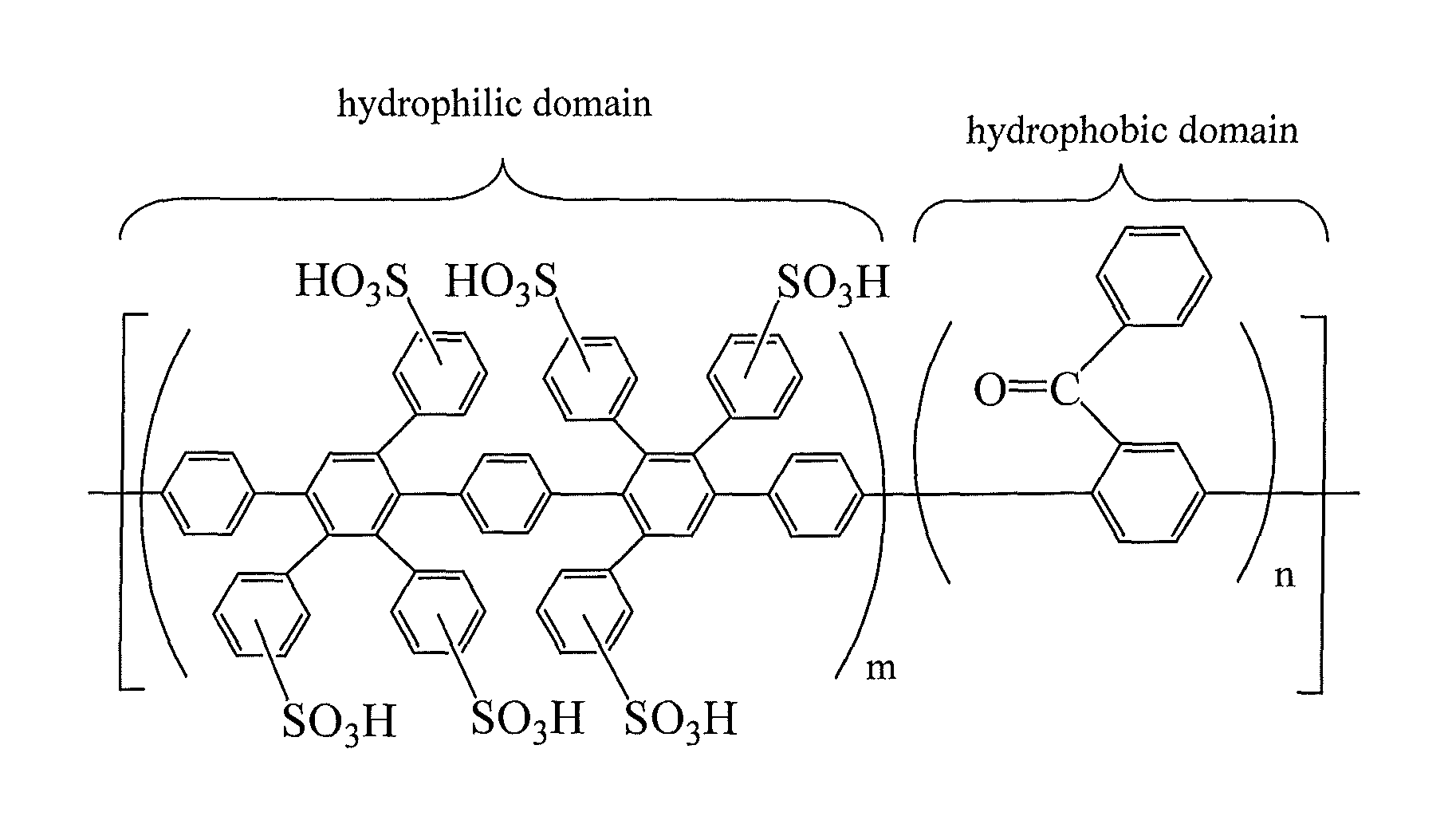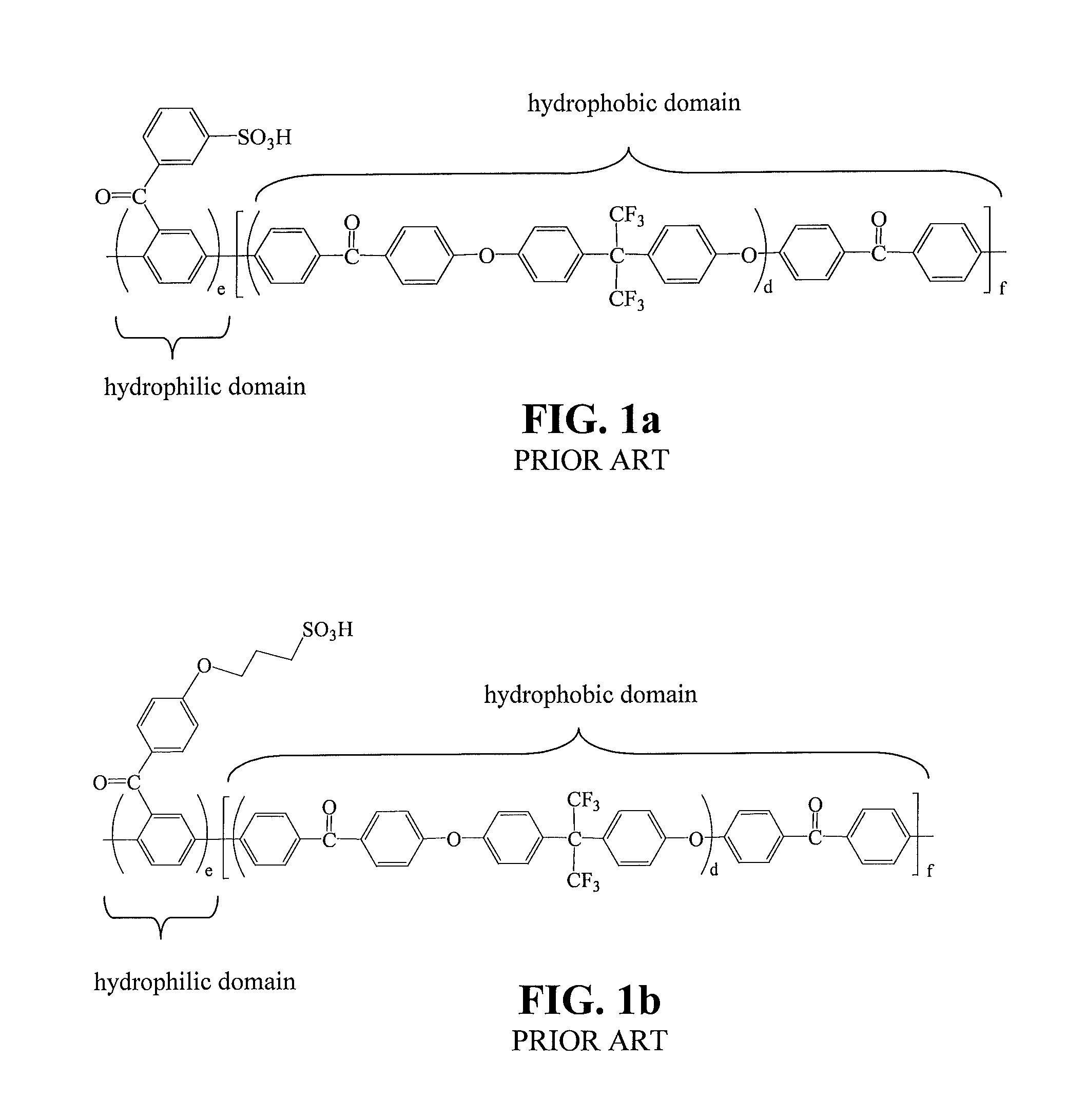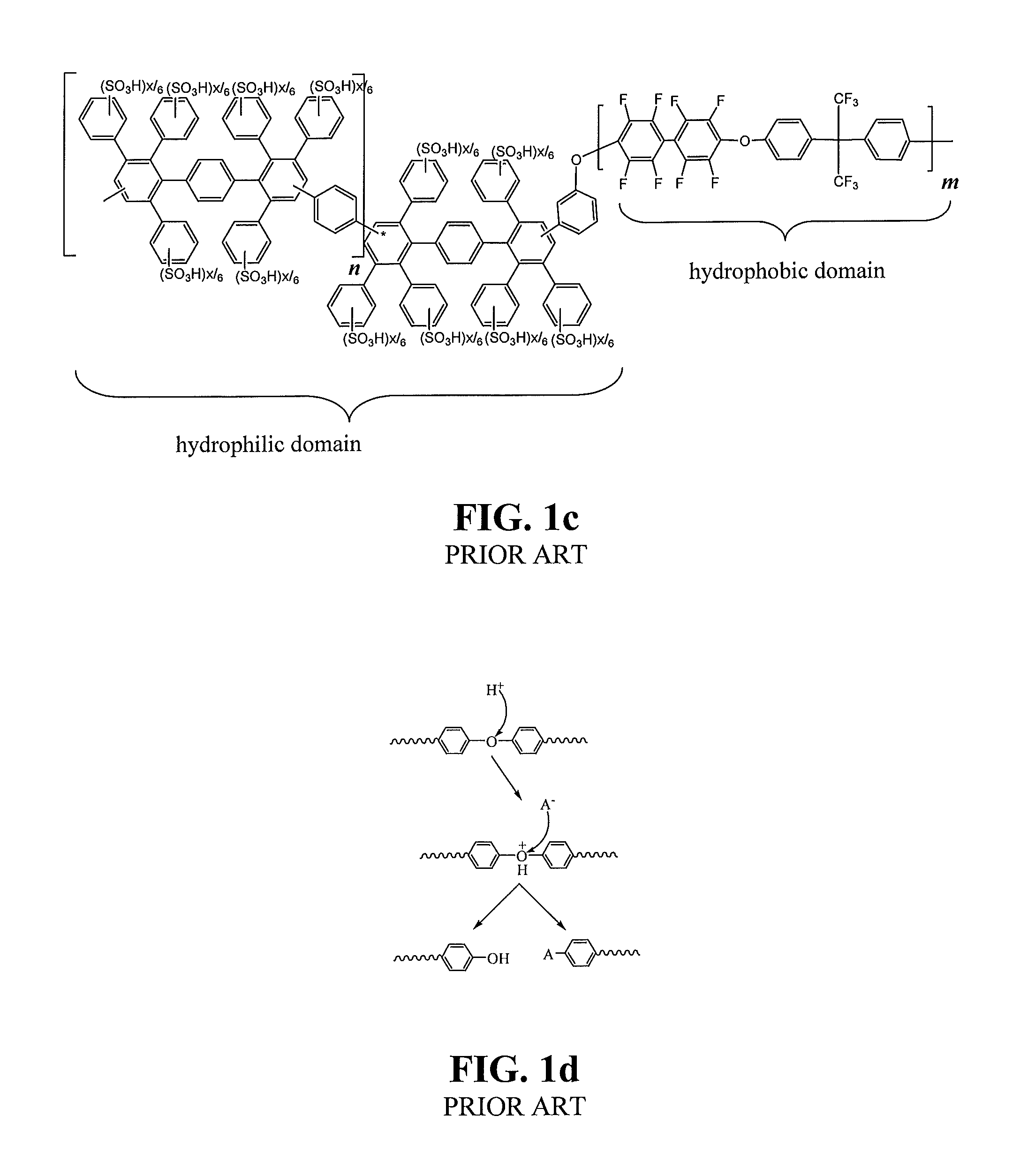Sulfonated poly(phenylene) copolymer electrolyte for fuel cells
a fuel cell and polymer electrolyte technology, applied in the field of proton conducting polymer electrolytes, can solve the problems of reducing the durability of the fuel cell stack, reducing the fuel efficiency and the driving range of the fuel cell vehicle, and limiting operation, so as to achieve the effect of superior durability and less susceptible to degradation
- Summary
- Abstract
- Description
- Claims
- Application Information
AI Technical Summary
Benefits of technology
Problems solved by technology
Method used
Image
Examples
examples
1) Synthesis of the Unsulfonated Hydrophilic Monomer for the Copolymers of FIG. 2a and FIG. 2b
[0039]3,3′-(1,4-phenylene)bis[2,4,5-triphenylcyclopentadienone] was synthesized as described elsewhere (M. A. Olgliaruso, E. I. Becker, J. Org. Chem., 1965, 30, 3354˜3360). Then, to synthesize the unsulfonated monomer for this hydrophilic domain, a 100 ml Schlenk flask was loaded with 3,3′-(1,4-phenylene)bis[2,4,5-triphenylcyclopentadienone] (10 g), 4-chlorophenylacetylene (6 g), and diphenyl ether (30 ml). The resulting mixture was freeze-thaw degassed three times, before heating under nitrogen (1 atm) at 180° C. for 30 minutes. Periodically, carbon monoxide was vented to avoid over-pressurization of the reaction flask. Subsequently, an additional 0.3 g of 4-chlorophenylacetylene was added, and the mixture was stirred for an additional 90 minutes at 180° C. under nitrogen atmosphere. The reaction flask was then cooled to room temperature, and 30 ml of toluene was added. The monomer was pr...
PUM
| Property | Measurement | Unit |
|---|---|---|
| molar ratio | aaaaa | aaaaa |
| thicknesses | aaaaa | aaaaa |
| thicknesses | aaaaa | aaaaa |
Abstract
Description
Claims
Application Information
 Login to View More
Login to View More - R&D
- Intellectual Property
- Life Sciences
- Materials
- Tech Scout
- Unparalleled Data Quality
- Higher Quality Content
- 60% Fewer Hallucinations
Browse by: Latest US Patents, China's latest patents, Technical Efficacy Thesaurus, Application Domain, Technology Topic, Popular Technical Reports.
© 2025 PatSnap. All rights reserved.Legal|Privacy policy|Modern Slavery Act Transparency Statement|Sitemap|About US| Contact US: help@patsnap.com



